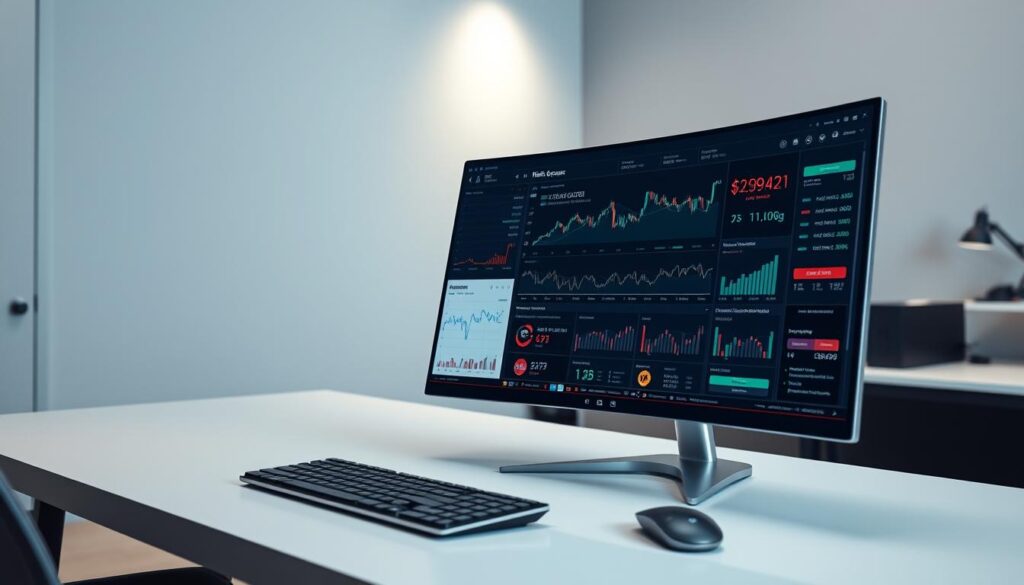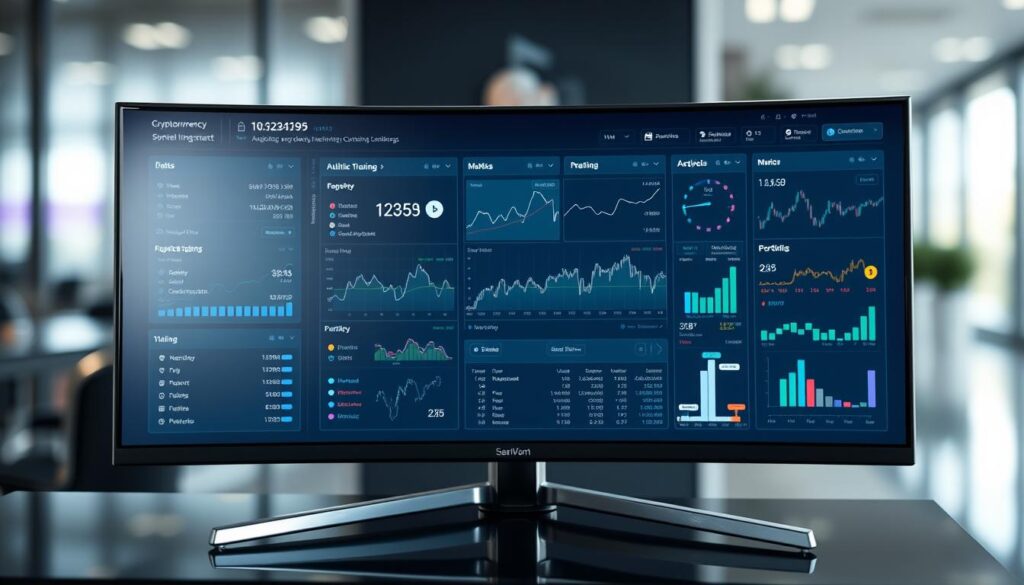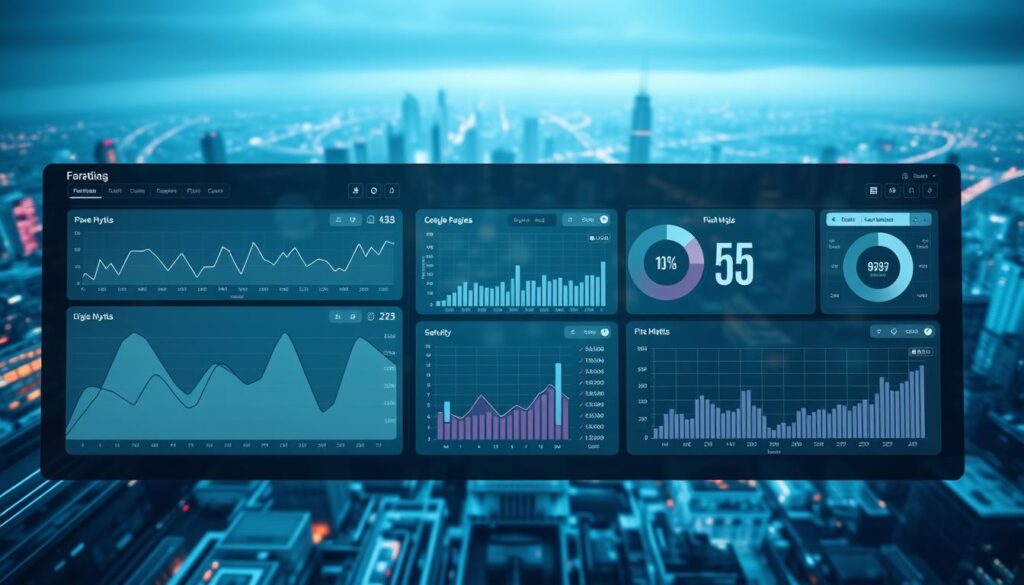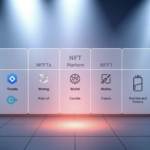Now Reading: Machine Learning Cryptocurrency Risk Management Tools: Expert Insights
- 01
Machine Learning Cryptocurrency Risk Management Tools: Expert Insights
Machine Learning Cryptocurrency Risk Management Tools: Expert Insights

This practical guide demystifies how adaptive systems and governance help professionals protect portfolios in one volatile asset class. Cryptocurrencies show daily swings and operational failures, so disciplined oversight beats ad hoc judgment.
We explain how data pipelines, models, and layered controls reduce drawdowns and improve consistency for traders and investments across markets. The scope covers assessing profiles, core controls, advanced algorithms, tool selection, validation, and aligning with U.S. compliance and news to stay ahead.
Real incidents such as exchange outages and regulatory shifts make this a live, evolving program. Expect concrete examples, feature engineering tips for liquidity and order-book signals, and steps to embed escalation paths that work during outages.
Key Takeaways
- Understand why crypto volatility and fragmented markets demand systematic management.
- Learn how models and data quality surface early stress signals for timely action.
- See how layered controls and clear limits reduce losses while preserving upside.
- Find guidance on selecting and validating platforms, from analytics to alerting.
- Adopt continuous monitoring, testing, and governance as markets and rules change.
Why machine learning matters for crypto risk management today
In fast-moving crypto markets, adaptive models turn streaming signals into timely defensive actions.
Manual processes struggle when price moves 10–20% in hours, liquidity evaporates, or exchange APIs throttle. Static rule sets miss subtle correlations and order-book stress that precede big losses.
Modern algorithms ingest real-time data and update continuously. That lets systems spot regime shifts earlier and adjust exposure for traders and portfolios before human teams can act.
During the March 12–13, 2020 crash, adaptive systems with dynamic controls cut drawdowns sharply versus static setups. Reinforcement-trained approaches learn to penalize drawdowns and tighten sizing as warning signals accumulate.
- Speed: models can reprice and retune limits in seconds across venues.
- Operational monitoring: exchange outages, API limits, and withdrawal delays trigger automated exposure cuts.
- Governance: automated actions sit inside defined limits and escalation paths to preserve oversight.
ML is not a cure-all, but it is a force multiplier for programs facing unique challenges in market conditions and infrastructure changes.
Understanding crypto risk profiles and market conditions
Traders and allocators must map how ordinary swings can escalate into disorderly selling.
Volatility in crypto often shows as routine 10–20% intraday moves. Those moves can become flash crashes, such as the 2017 GDAX Ethereum gap where price briefly plunged from $319 to $0.10. Such episodes can gap through stops and invalidate intraday assumptions.
Liquidity can vanish when stress hits. Top-of-book depth falls, bid-ask spreads widen, and order books show imbalances that worsen execution just when exits are needed.
Execution and technical issues amplify losses. Partial fills, API rate limits, exchange outages, and withdrawal freezes can strand assets and magnify portfolio exposure across venues.
Regulatory shocks and diagnostics
Announcements from the U.S. SEC, China policy changes, or MiCA milestones often trigger swift repricings and cross-venue dislocations.
Use funding, spreads, and cross-exchange divergence as early strain signals. For a practical reference on diagnostic methods see funding and spread diagnostics.

- When correlations climb, diversification benefits shrink and dynamic hedging or cash buffers become vital.
- Capture order-book depth, spread, and latency to model execution costs in both backtests and live monitors.
| Condition | Typical Impact | Mitigation |
|---|---|---|
| Routine 10–20% price swings | Higher intraday drawdowns; stop gaps | Volatility-adjusted sizing; wider stop spacing |
| Liquidity evaporation | Large slippage; poor fills | Tiered exits; venue diversification |
| Exchange outages / API limits | Order rejections; frozen withdrawals | Redundant routing; pre-funded collateral |
| Regulatory announcements | Rapid repricing; cross-market contagion | Size caps; hedges and cash buffers |
Best-practice risk controls every crypto trading program needs
Practical controls keep portfolios steady when volatility spikes and markets fragment.

Start with sizing and stops that adapt to real conditions. Advanced bots scale position sizes inversely with realized or forecast volatility so exposure stays steady across regimes. That reduces sudden portfolio drawdowns and keeps trade risk predictable.
Volatility-adjusted position sizing
Scale exposure down in turbulent regimes and up when markets calm. For example, halve typical position sizes after a 5% account drawdown, slow trading after 7%, and suspend activity at 10% pending review.
Multi-layered stop-loss frameworks
Combine technical levels, ATR-based bands, time stops, and trailing profit locks. Cascading stops give staged exits that protect gains and cap losses without forcing one-size-fits-all exits.
Portfolio diversification and correlation-aware limits
Set concentration caps and recalibrate when correlations climb. Favor core assets with deeper liquidity and lower operational risks to anchor the portfolio.
Drawdown protection and circuit breakers
- Pre- and post-trade checks vs liquidity and venue health to reduce slippage and failed orders.
- Program-level tiered responses that cut trade size and frequency before a hard circuit breaker.
- Frequent stress tests—shock prices, spreads, and latency—to validate resilience.
Document thresholds and escalation paths so teams and systems execute consistently during fast markets. Integrate hedging overlays for known high-risk events to dampen portfolio volatility.
Advanced ML techniques that reduce downside in crypto markets
Advanced model ensembles can spot early signs of stress and steer exposure before prices cascade. These systems blend quantitative signals, venue health, and sentiment to trigger preemptive de-risking.

Reinforcement frameworks are trained on millions of simulated trades to reward steady returns and penalize drawdowns. They optimize policies that constrain tail exposure while keeping performance across market regimes.
Anomaly and pattern detection
Pattern recognition models learn crash signatures from events like the 2017 GDAX flash crash. They flag order-book imbalance, spread widening, and cross-venue divergence before price accelerates downward.
Sentiment-driven adjustments
Sentiment analysis ingests social media and news feeds to quantify sudden narrative shifts about tokens or exchanges. When chatter spikes negatively, systems can temporarily cut size or throttle activity.
Volatility forecasting and exchange health
Volatility forecasts modulate stop distances, trade cadence, and sizing to prevent overtrading in unstable markets. Exchange reliability scoring—tracking API latency and error rates—lets programs pause or reroute activity when venue health degrades.
- Ensemble approach: blend quantitative models, sentiment, and venue scores for robust signals.
- Feature vetting: regularize and test to avoid overfitting and detect model drift.
- Hard overrides: enforce immediate exposure cuts on extreme anomalies regardless of model confidence.
- Further reading: see reinforcement frameworks for stability in related research.
Machine learning cryptocurrency risk management tools
Best-of-breed platforms now pair on-chain tracing, portfolio consolidation, and real-time media monitoring into operational alerts. These services help teams detect illicit flows, reconcile trades across exchanges, and act on sudden market shifts.

Blockchain analytics for illicit activity and counterparty screening
Chainalysis and CipherMine score wallets, trace fund flows, and surface suspicious patterns. Use their outputs to block flagged deposit addresses, vet new counterparties, and update watchlists tied to escalation paths.
Portfolio, tax, and oversight platforms
CoinTracking consolidates trade history across exchanges, computes realized and unrealized P/L, and generates tax reports. It also provides portfolio-level analysis for auditors and internal oversight teams.
Real-time alerts and market monitoring
CryptoMood and Cryptolume turn social media, news, and multi-exchange feeds into severity-tagged alerts. They detect sentiment shocks, liquidity anomalies, and cross-venue divergences for prompt action.
- Integrate feeds into centralized logs so incidents trigger defined responses.
- Require strong exchange coverage, API reliability, and historical depth when procuring vendors.
- Map alerts to policy actions—reduce exposure, pause trading, or block addresses.
- Validate vendor models regularly and ensure export formats support downstream analysis.
| Capability | Primary Benefit | Procurement Check |
|---|---|---|
| On-chain tracing | Detect illicit flows and score counterparties | Address coverage, tracing depth, API access |
| Portfolio consolidation | Accurate P/L, tax and auditor-ready reports | Multi-exchange imports, export formats |
| Real-time monitoring | Early alerts on sentiment and liquidity | Latency, exchange coverage, NLP accuracy |
For practical guidance on integrating sentiment feeds into alerts, see market sentiment analysis.
Building and validating a risk-aware ML trading stack
A robust trading stack begins with layered tests that expose model and infrastructure weak points.
Validation must go beyond backtests. Use out-of-sample checks, walk-forward evaluation, and live shadow mode before full deployment. This reduces overfitting and proves performance in changing market conditions.
Backtesting, stress testing, and correlation regime analysis
Include scenario tests that inject extreme price gaps, spread blowouts, and latency spikes. Simulate shocks worse than history to validate circuit breakers and loss containment.
Run correlation regime analysis to catch when diversification fails. When assets converge, automatically increase cash buffers, cut exposure, and cap leverage to protect portfolios.
Redundant infrastructure and cross-exchange resilience
Specify data standards: clean multi-exchange feeds, synced timestamps, and frequent order-book snapshots so models reflect executable reality.
Architect redundancy across cloud regions and independent exchange keys. Add failover logic to sustain trading or perform safe shutdowns during outages.
- Observability: track signals, venue health, slippage, and P/L attribution.
- Change control: document rollbacks and enforce layered limits per asset, strategy, and portfolio.
- Drills: schedule incident simulations to test on-call response and communication paths.
| Test | Purpose | Outcome |
|---|---|---|
| Walk-forward | Validate out-of-sample stability | Lower overfitting; realistic returns |
| Stress scenarios | Probe losses from extreme shocks | Verified circuit breakers and limits |
| Correlation analysis | Detect diversification collapse | Auto cash buffers and exposure cuts |
| Infra failover | Ensure continuity across exchanges | Maintain execution or safe halt |
Compliance-first risk management in the United States
Traders and ops must tie exposure limits to evolving enforcement and exchange health. U.S. agencies have classified some tokens as securities and pursued enforcement actions. That reality changes how programs list, custody, and report positions.
Navigating SEC actions, MiCA abroad, and exchange due diligence
Map token exposure against SEC trends and keep disclosures flexible as interpretations evolve. Watch MiCA and other jurisdictions for cross-border changes that affect listings and custody when serving global traders.
- Check proof-of-reserves, solvency history, and custody segregation for each exchange.
- Assess uptime SLAs, past incidents (e.g., FTX, Mt. Gox), and security posture.
- Use on-chain analytics to screen sanctions and suspicious flows.
Governance, audit trails, and incident response readiness
Documented governance anchors decisions. Build committee oversight, written risk appetites, and approval limits into policy.
Capture audit trails: model versions, parameter changes, orders, fills, and manual overrides. Maintain runbooks for outages, API degradation, wallet compromises, and regulatory announcements. Test responses through drills so teams can act quickly and regulators can be satisfied.
| Area | Required Evidence | Outcome |
|---|---|---|
| Exchange due diligence | Proof-of-reserves, incident history, SLA reports | Lower counterparty failure exposure |
| Governance | Policies, committee minutes, escalation paths | Consistent, auditable decisions |
| Audit trails | Versioned models, trade logs, override records | Fast investigation and regulator response |
| Incident readiness | Runbooks, drill logs, communication templates | Faster recovery; fewer operational losses |
From principles to practice: an implementation roadmap
Turn principles into action with a phased roadmap that protects portfolios through changing market conditions.
Start with a written policy that caps exposure per asset and per strategy. Define acceptable volatility at the portfolio level and set thresholds to pause trading during stress.
Phase 1 deploys core strategies: volatility-adjusted sizing, cascading stops, and diversification controls to steady returns during price swings. Phase 2 adds model-driven modules for anomaly detection, volatility forecasts, and reinforcement policies to cut losses proactively.
Phase 3 builds redundant pipelines across clouds and exchanges, normalizes feeds, and unifies portfolio and tax reporting for audit-ready records. Run out-of-sample backtests, synthetic stress scenarios, and quarterly drills that include exchange outages and regulatory shocks.
Map vendor outputs (Chainalysis, CipherMine, CoinTracking, CryptoMood, Cryptolume) to clear actions so traders know how alerts translate into exposure cuts. Review the roadmap often to keep strategies aligned with evolving crypto investments and markets.














